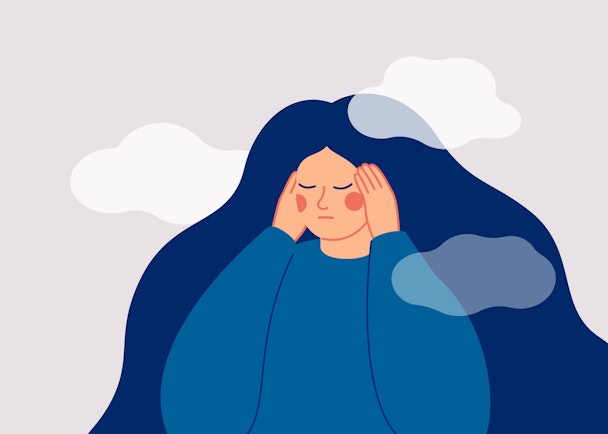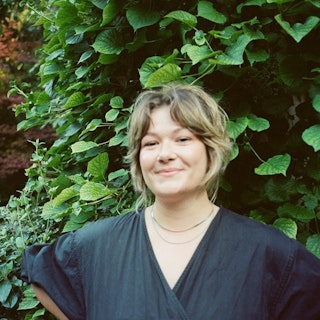Staying creative through Covid: how the industry is managing ‘brain fog’
Two years of the Covid-19 pandemic have left many feeling fatigued, unfocused, unmotivated and overwhelmed. The Drum speaks to agency leaders to find out how they managed to stay creative as ‘brain fog’ set in.

Fatigue, difficulty concentrating and poor mental health are all associated with the impact of living with Covid
Last month, it was reported that pandemic ‘brain fog’ was a recognized neurological phenomenon. It was associated with the conditions many have found themselves working through – the culmination of stress and lockdown leaving many with difficulties problem solving, organizing and completing daily tasks. Many struggled with isolation and lack of connection with others.
“As the pandemic rolled on, the disconnect with people was an element you felt the most,” recalls Julian Esposito, creative director at OMD.
“You no longer had those chats as you went for your morning coffee run, nor the tap on the shoulder when you had the inkling of an idea and you just needed a sounding board to see where it could take you.”
Back in March 2020, many feel that, in hindsight, they turned toward work as a coping mechanism for the first lockdown. But two years on, the stopping and starting of life through numerous waves “has messed with our heads,” adds Claire Humphris, chief executive officer at Iris London.
“The end result – lethargy. Is anything worth getting excited over? Best not even start as it might be taken away in a heartbeat. That’s a problem for our industry,” she explains.
“Advertising is a career that you have to be able to get excited about day in, day out. Excitement needs to be fueled by energy. Creative energy comes from our ability to feel empathy and emotions.”
Input equals output
When restrictions were first put in place, creatives were shut out of many of their normal sources of inspiration – galleries, cinemas, gig venues and even the morning commute were closed off to creatives.
“What I’ve found really tough working from home has been the loss of environmental stimulus – the countless ads, shop windows, people and throwaway interactions you subconsciously absorb every day on your commute and in the office that you pull into your thinking,” says Rob Griffiths, creative director at Elvis.
Alistair Campbell, executive creative director at Waste, says his agency adopted “a creative roulette” to try and counter the lack of inspiration people were getting from their WFH environments. Each week a different member of his team would show three things that had caught their eye.
“We started a radio show, to keep things lively, and give people a shared event and a creative outlet that wasn’t work-related,” he continued. “One of the biggest challenges of lockdown was certainly the monotony of it, and if there’s nothing new coming in, it becomes very difficult to get anything of quality out.”
Humphris says the Iris team also developed their own workaround – a new creative technique dubbed “swarming.”
“It’s like a HIIT workout for your brain,” Hunphris said. “It’s time-limited to 48 hours, but open to as many creative people who want to participate. It’s a short, sharp, intense creative development window. The brief is specific and focused on one or two deliverables. The top two or three ideas are then taken forward for development.
“Our people have loved the fun and friendly competitive atmosphere that comes with mass participation – the joy of being creative without the weight of sole responsibility for cracking the idea. And the time limit constraint stops you getting fixated on one route and going too deep.”
However, there is consensus among the agency heads that whatever lighthearted add-ons are implemented in-house to spark creativity, preventing burnout and supporting staff throughout the pandemic has been imperative.
Backed by policy
“Firstly, as obvious as it sounds, we’ve worked out the best way of actually spending time together, sacrificing the ruthless efficiency of being 100% remote at the altar of glorious efficacy – embracing hybrid working with two days in the office per week whenever it was legal,” says Dan Cullen-Schute, chief executive at Creature London.
“When that couldn’t happen, we’ve worked our arses off to make sure working from home never felt like an isolated, solo affair – because creativity is rarely a solo endeavor. That meant regular all-agency meetings, regular all-agency socials and regular all-agency time spent talking absolute nonsense that had nothing to do with work.”
Humphris says that Covid has offered Iris an opportunity to really overhaul its DE&I strategies, as well as its wellbeing offerings.
“In addition to maintaining hybrid working, we’re using our DE&I strategy to create real change for the experience of all people – and we’re monitoring that across gender, ethnicity, sexuality – to ensure there are no blind spots in the Iris experience,” she says.
“We have increased maternity (to six months of full pay) and paternity leave (to four weeks of full pay) and vital support for IVF, adoption and miscarriage, as well as a menopause policy – ensuring we support women at all stages in their lives and keep them thriving and progressing in their career at Iris.
“Iris’s values are communicated through our policies ... by the way we treat people every day.”
Waste’s Campbell also says that on a pastoral level, keeping abreast of each individual’s personal situations has never been so important. “Sometimes people just need to feel like you’re looking out for them. So one-to-one check-ins are important and certainly helped people feel less isolated in the beginning.”
Creative resilience
Despite the odds, the agencies we spoke to largely reported positive development and growth throughout the duration of the pandemic.
“If there’s one thing that continues to shine a light on the creative industries (and the cerebral cortex that resides within it), it’s our amazing ability to thrive in the face of adversity,” says Ben Middleton, chief creative officer at Creature.
“Despite the brain fog, crippling stresses and rudderless government we’ve had to contend with during the pandemic, our relentless curiosity, problem solving, insatiable hunger to create and drive to bring magical stuff into the world have continued to course through the veins of the best in our industry.”
Humphris concludes that the pandemic has offered somewhat of a stark wake-up call when it comes to the treatment of employees within the industry – particularly amid the so-called ‘great resignation.’
“Just as you need empathy to understand a brand’s audience and create communication that connects with them, we need to show empathy for the lives of our employees. Our talent is our most important audience. The great resignation has just shown us their power.”

